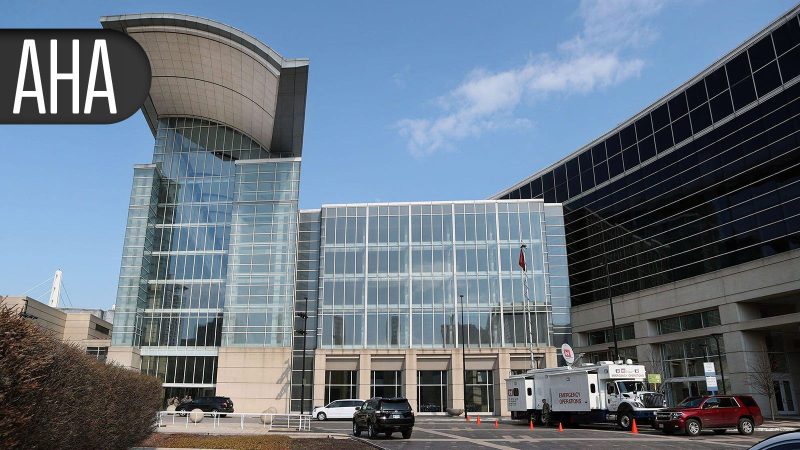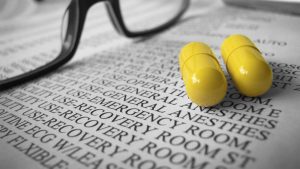Reused Pacemakers Good as New in Early Safety Data

CHICAGO — Secondhand permanent pacemaker use in poorer countries, following thorough cleaning and repackaging, has not resulted in patient harm so far, according to the My Heart Your Heart trialists.
In patients who could not afford new devices on their own, use of so-called “reconditioned” pacemakers met criteria for non-inferiority on the basis of infections at 90 days compared with new devices (1.5% vs 2.9%), reported Thomas Crawford, MD, of University of Michigan Health in Ann Arbor, at the American Heart Association (AHA) annual meeting.
The randomized trial’s preliminary results from 90 days also showed similarly low complications at 90 days between new and used pacemaker recipients, respectively (P>0.1 for all comparisons):
- Infection resolved with antibiotics and pacemaker removal: 2.2% vs 1.5%
- Cellulitis resolved with antibiotics: 0.7% vs 0%
- Lead dislodgement: 5% vs 7.3%
- Pacemaker removal: 2.2% vs 1.5%
- Death: 0% vs 2.2%
“There were no observed malfunctions or failures of the pulse generator in either new or reconditioned pacemakers. Longer-term follow-up will be necessary to confirm the safety and efficacy of reconditioned pacemakers,” Crawford told the audience. The study’s full 12-month report is still pending, with audit of the clinical data entry ongoing at some sites.
Crawford explained the rationale for testing the postmortem reuse of pacemakers: without a truly low-cost pacemaker on the market, many patients in low- and middle-income countries would have no access to this therapy. Compared with a $2,000 device sold new in these countries, the off-label reuse of pacemakers could make devices available for $50 to $100 each to patients who need them (with additional leads costing $50 to $200 separately), he estimated during an AHA press conference.
When it comes to promoting equitable access and social justice in medicine, “this is a great example of walking the walk and not just talking the talk,” commented Miguel Leal, MD, of Emory University in Atlanta, discussing My Heart Your Heart during the press conference.
“It’s great that we have these no-inferiority endpoints met, because now we have momentum to stimulate this type of science to be reproduced in many centers, hopefully with bigger numbers of patients and also longer-term follow-up,” Leal added.
My Heart Your Heart is a randomized single-blind trial conducted in Venezuela, Nigeria, Paraguay, Kenya, Mozambique, and Mexico. Participating sites have to demonstrate qualified physicians and facilities. Among the ethical, legal, and regulatory obstacles investigators faced were obtaining an FDA export permit and foreign government approvals. Devices picked for reprocessing in the trial all have to have at least 4 years of remaining battery life.
“Collaboration between centers of excellence in the U.S., charitable organizations, and foreign entities may allow safe and effective large scale pacemaker reconditioning,” Crawford suggested.
“We were able to establish relationships with physicians there who had the implementation skills and who also were able to access the government to allow this process to happen … Understandably, institutions are risk averse, and so it’s not something that’s legal anywhere in the world, even though it happens in those countries,” he added.
Leal said the ability to expand the My Heart Your Heart program relies on local infrastructure.
“We have to identify certain metropolitan areas in these countries and make them centers for dissemination of technique and knowledge,” he said. “We produce in the United States approximately 120 electrophysiologists per year. More than 150 countries in the world have zero electrophysiologists. So there’s also that big gap that needs to be addressed as well, but it starts with this type of initiative.”
My Heart Your Heart was conducted by volunteers and companies providing free services. At seven sites in six countries, there were 298 people randomized to a new pacemaker or a reconditioned device from 2022 to 2024. Both groups were around age 70 and roughly evenly split between men and women.
Patients had to have a class I indication for de novo bradycardia pacing and no financial means of buying a new pacemaker. Those deemed ineligible for the study — having severe comorbidities, age younger than 18 years, or pregnancy, among other criteria — could be offered devices as part of a registry.
The trial was designed with the primary endpoint being freedom from procedure-related infection at 12 months. A key secondary endpoint is freedom from pacemaker software or hardware malfunction or unexplained death at 12 months.
By 90 days, when there was infection in a patient, it had occurred about 20 days from implant of a new device versus 41.5 days from implant of a reconditioned device.
Study authors acknowledged that a larger sample size may be needed to show differences in device failure or other rare events.
Crawford cautioned that besides device cost, plenty other barriers stand in the way of pacemaker adoption in low- and middle-income countries, including limited diagnostic tools, a lack of properly equipped facilities and trained staff, and patient education.
“In many of these countries, the physician has to kind of break the concept out of the blue and say, ‘Hey, there’s such a device that can actually make you feel better, can make you live longer. You’ve never heard of it, but we got one from a deceased person in the United States here,'” he said. “There’s a lot of work that needs to be done in actually disseminating the knowledge about what this technology can do for a patient.”
Disclosures
The My Heart Your Heart trial was funded by charitable giving.
Crawford disclosed no relationships with industry.
Leal disclosed a relationship with Medtronic.
Primary Source
American Heart Association
Source Reference: Crawford T, et al “Preliminary results of randomized trial of new versus reconditioned pacemakers for patients unable to obtain a new device in low and middle-income countries: the My Heart Your Heart Randomized Controlled Trial (MHYH-RCT)” AHA 2024.








